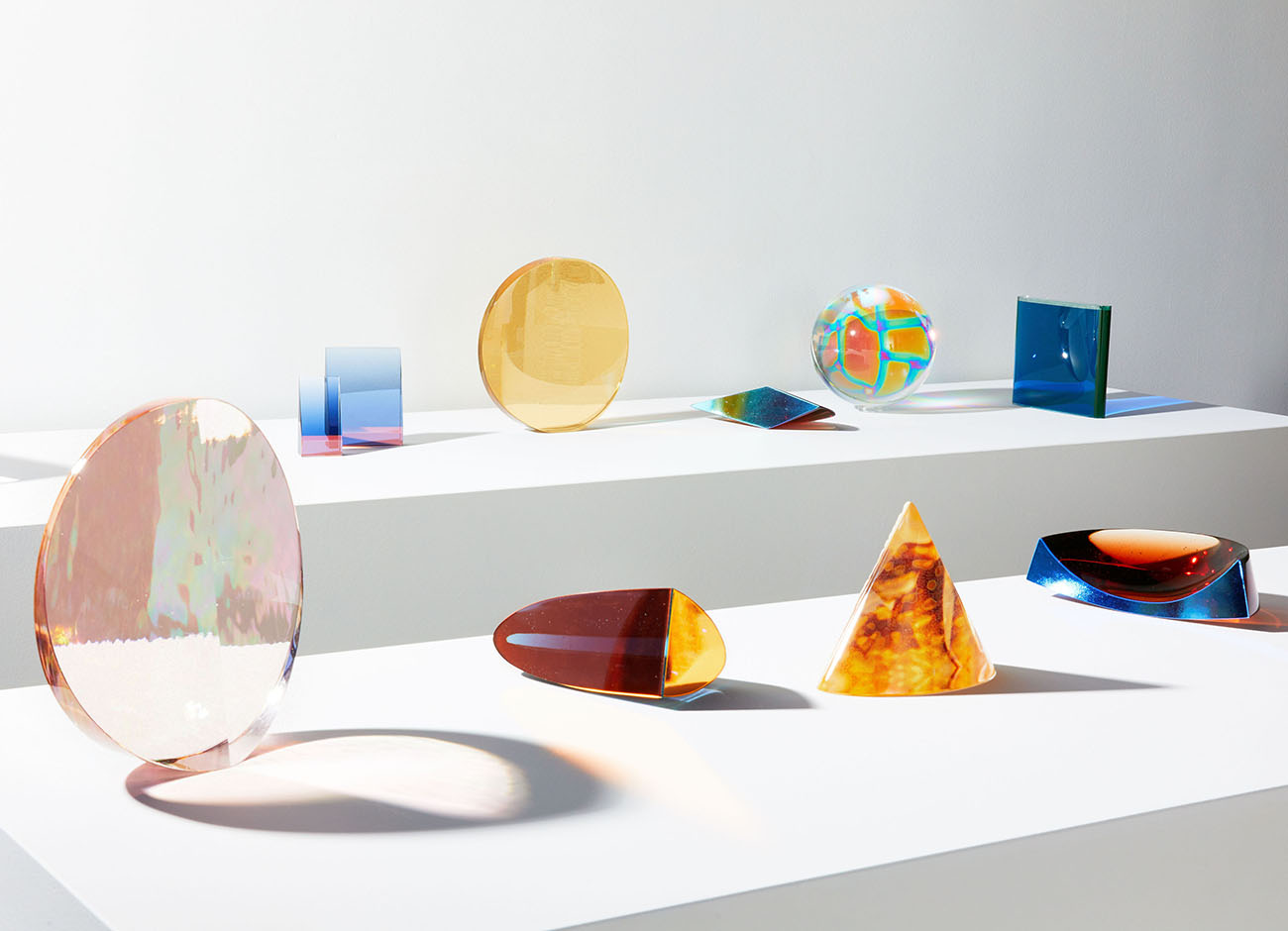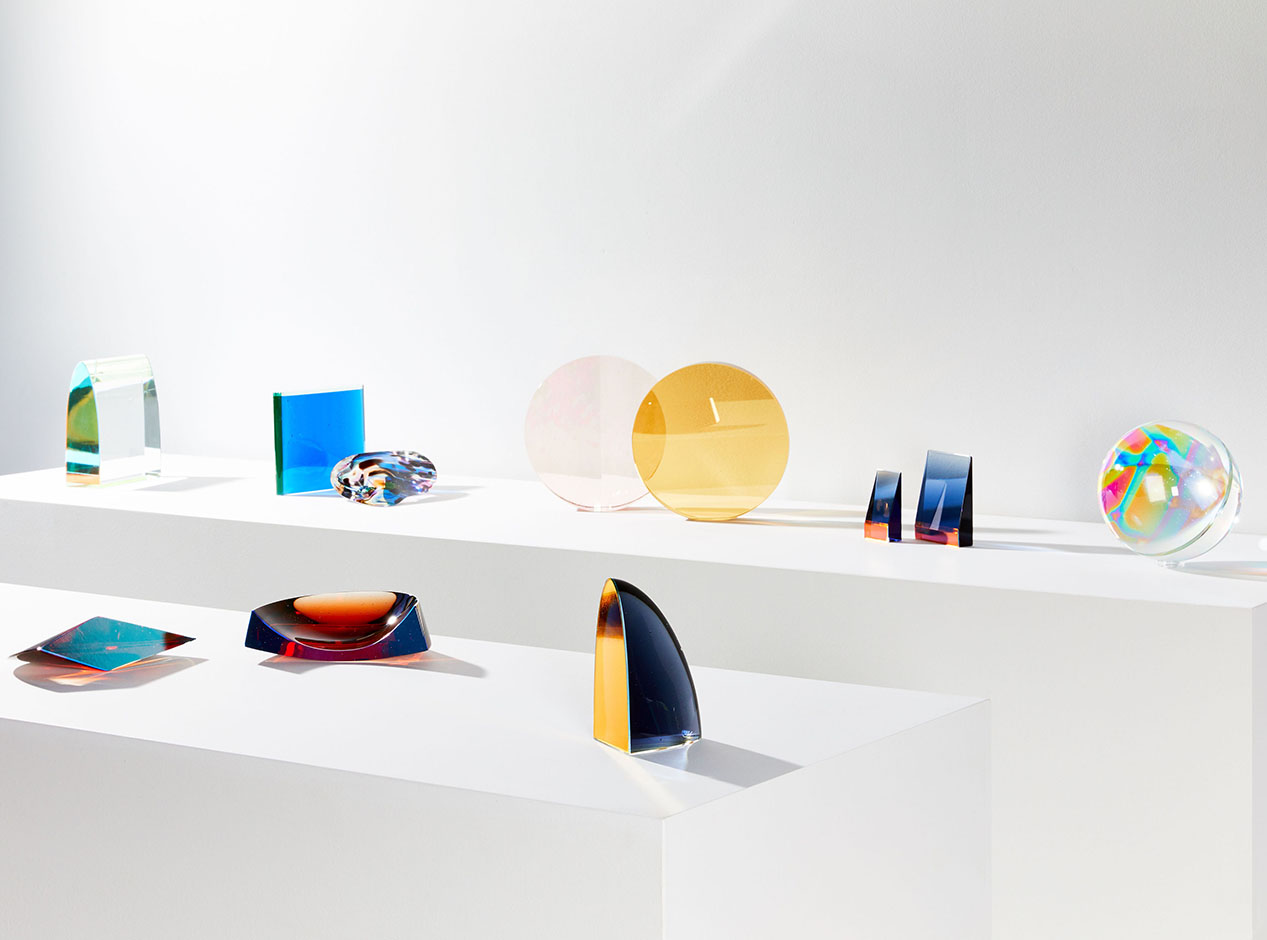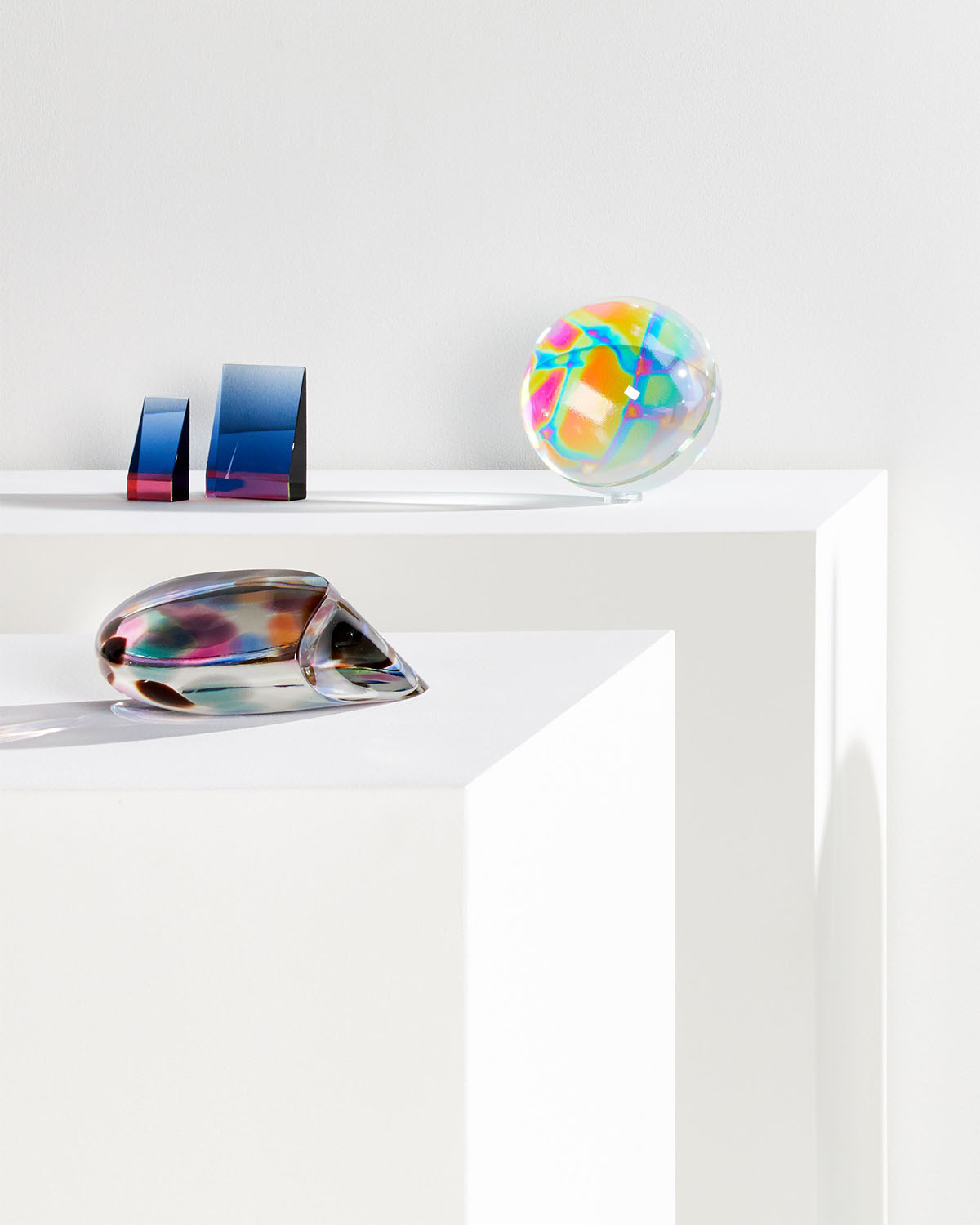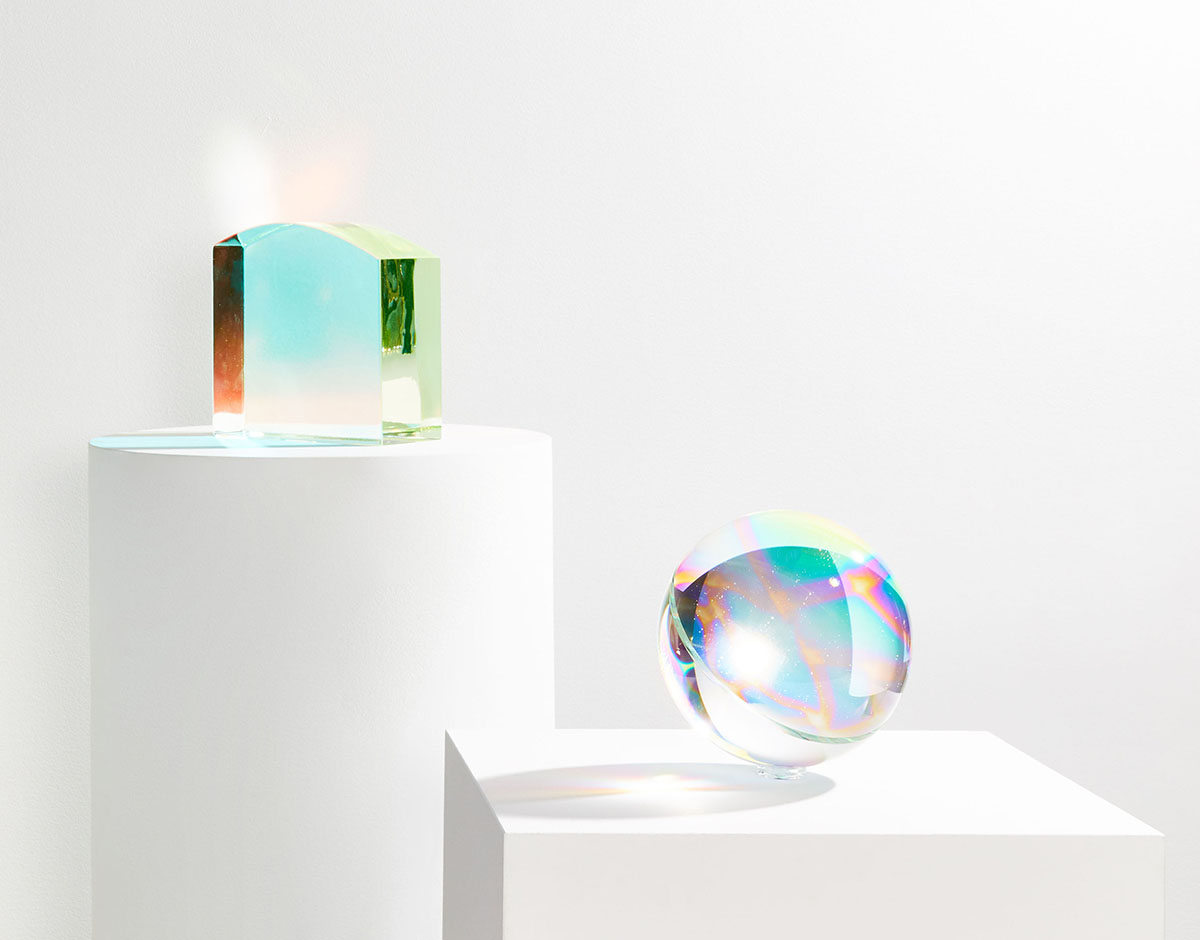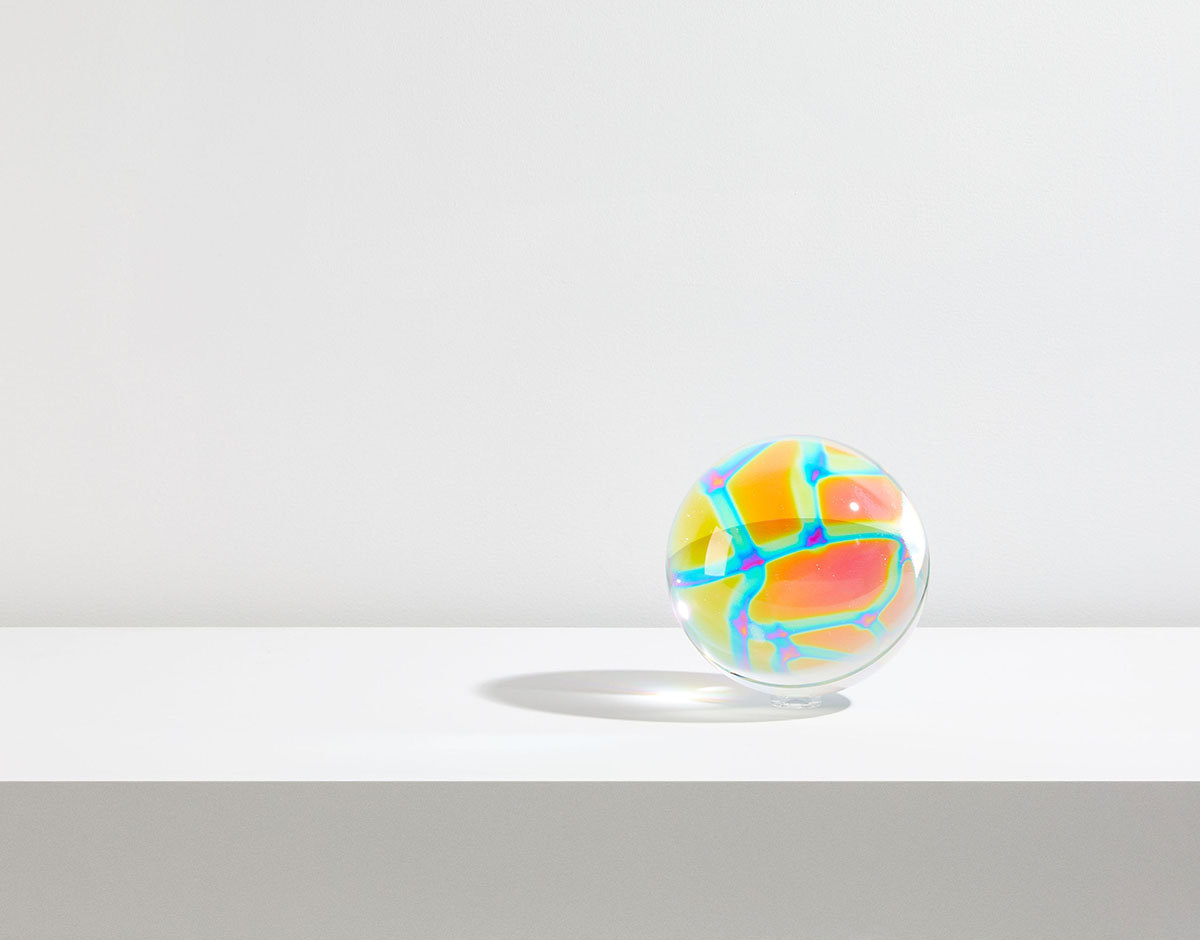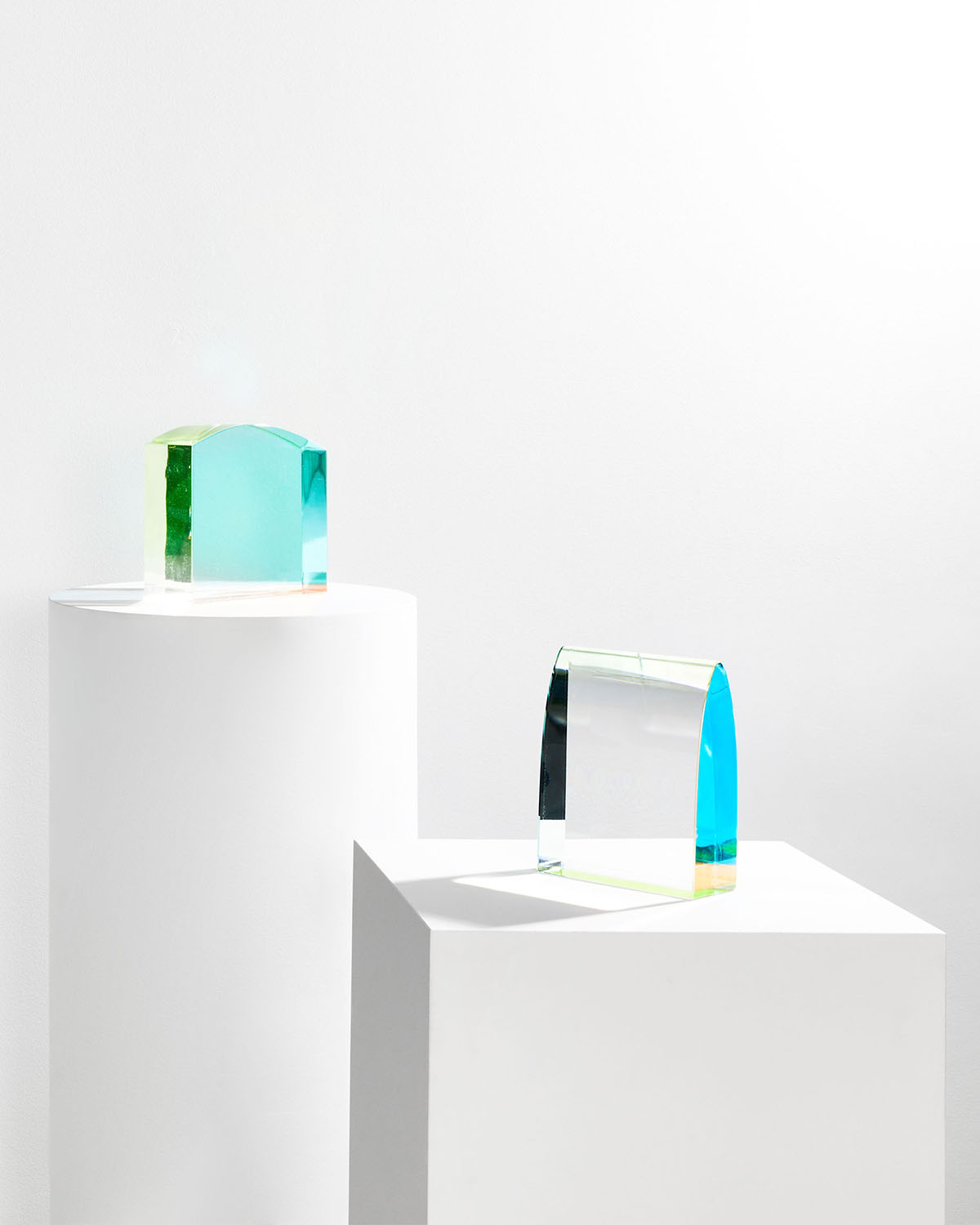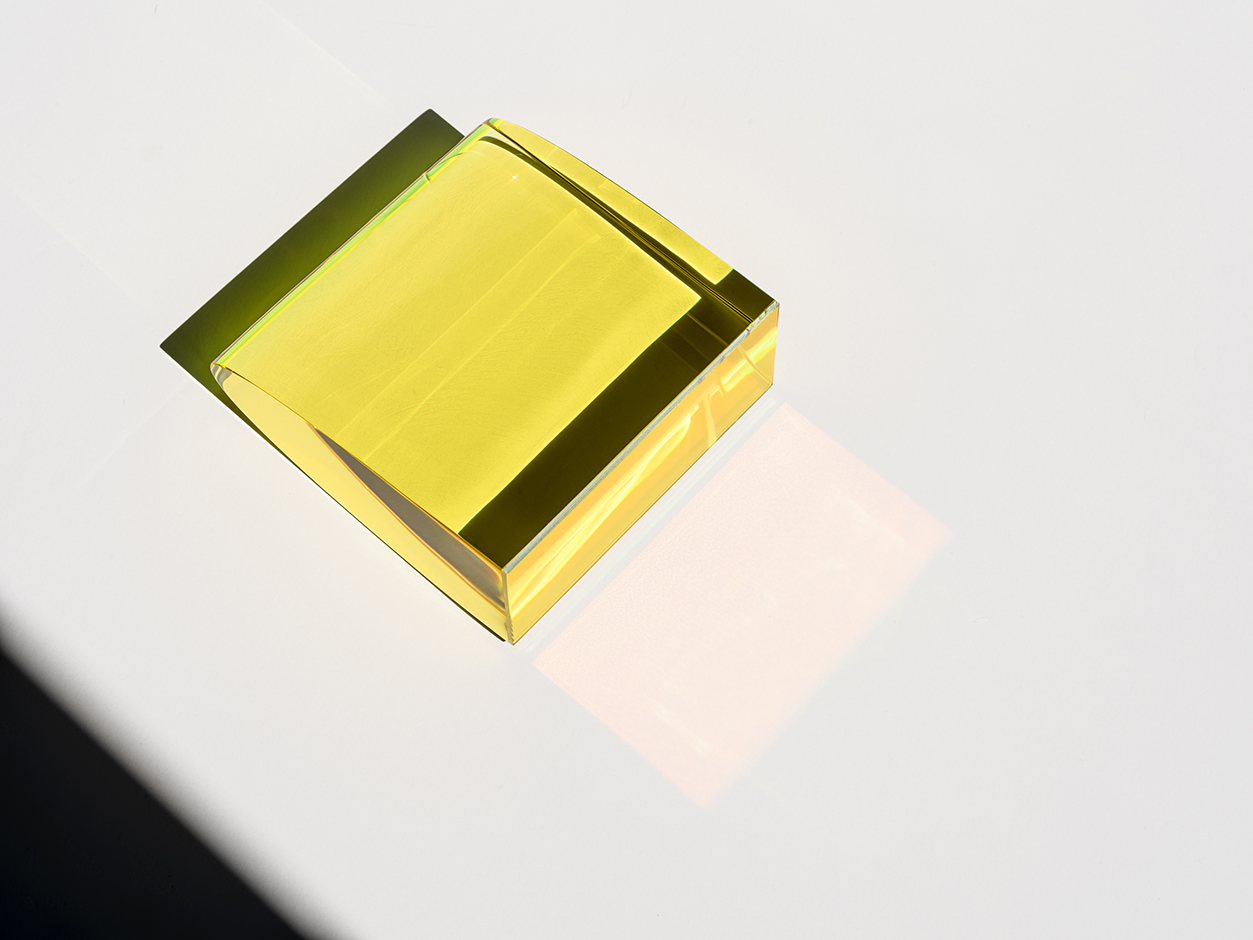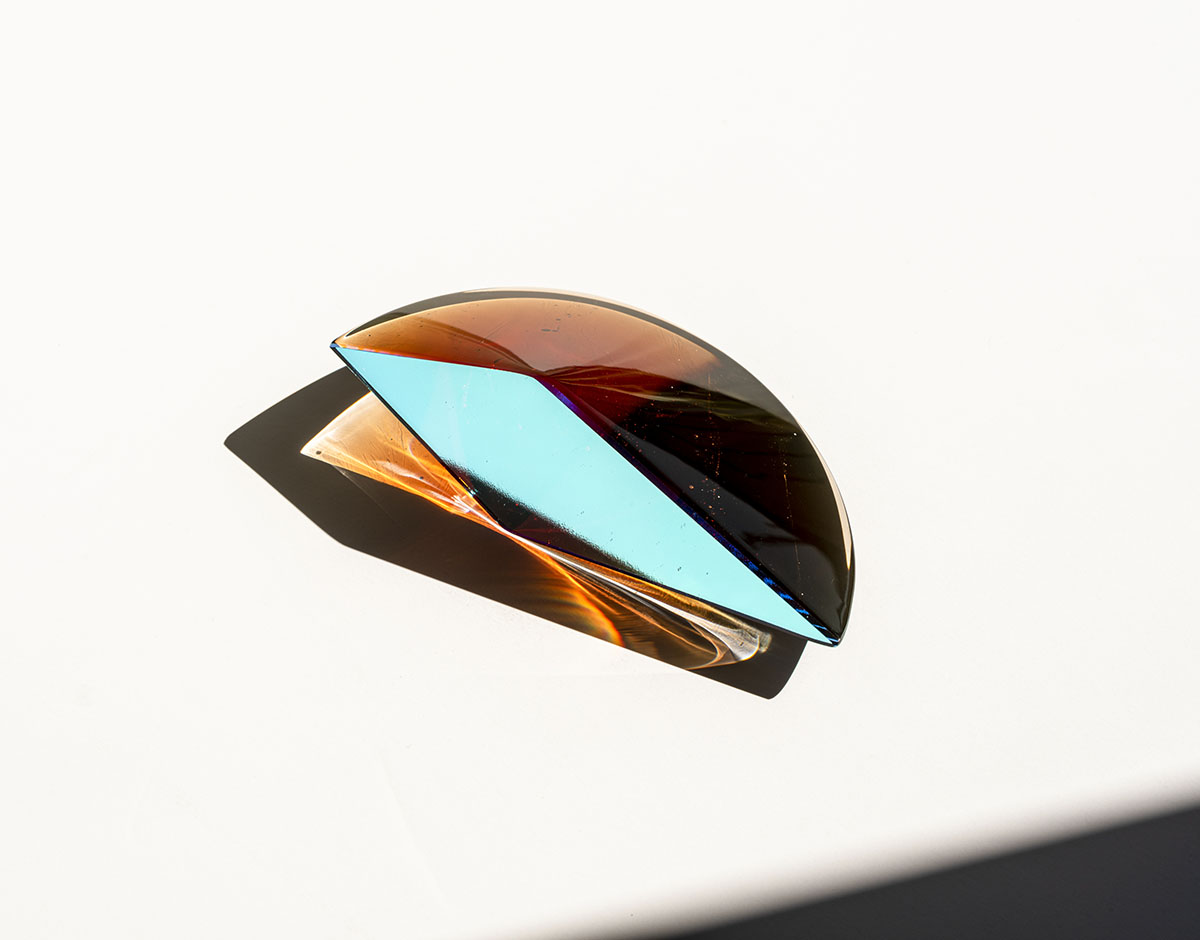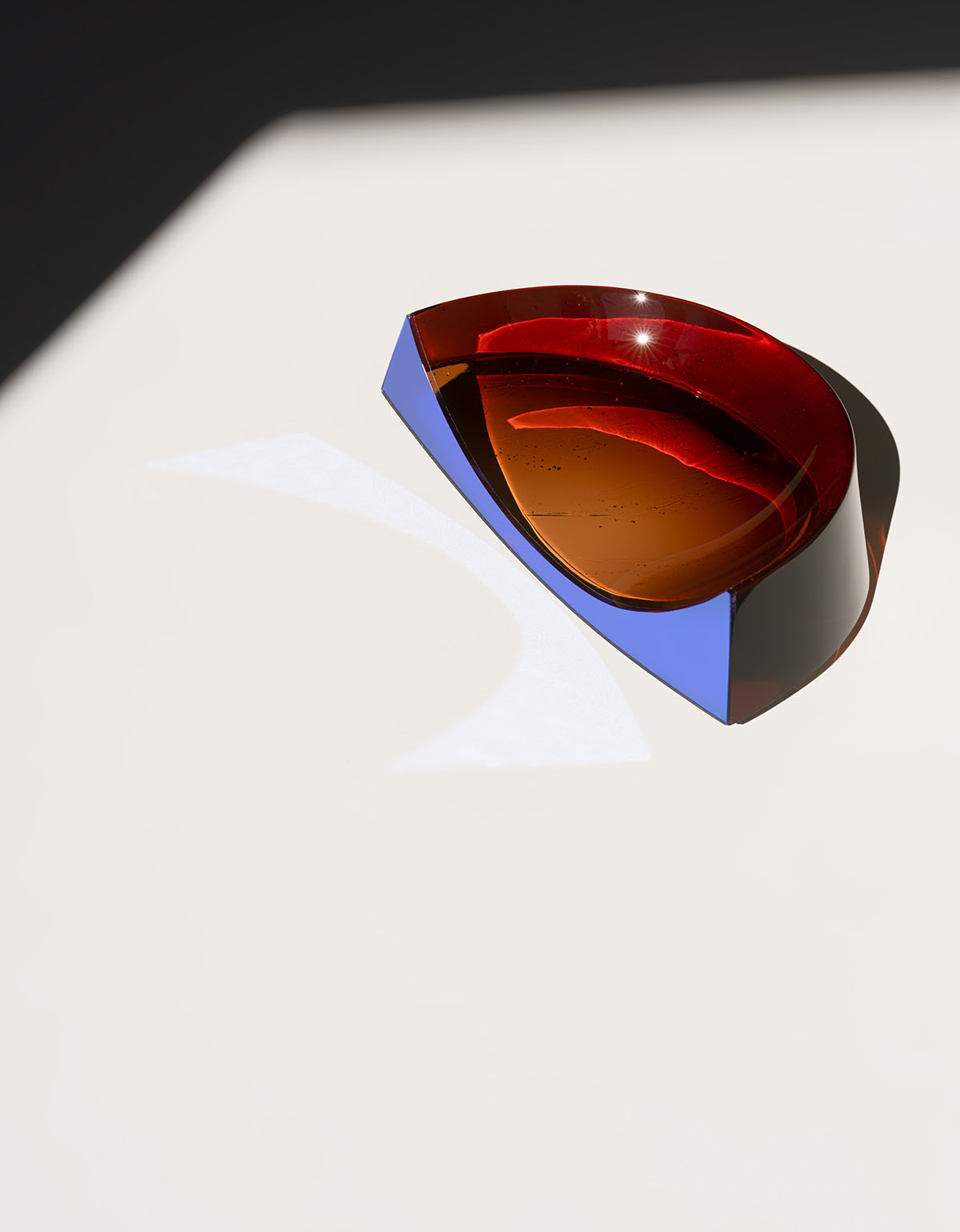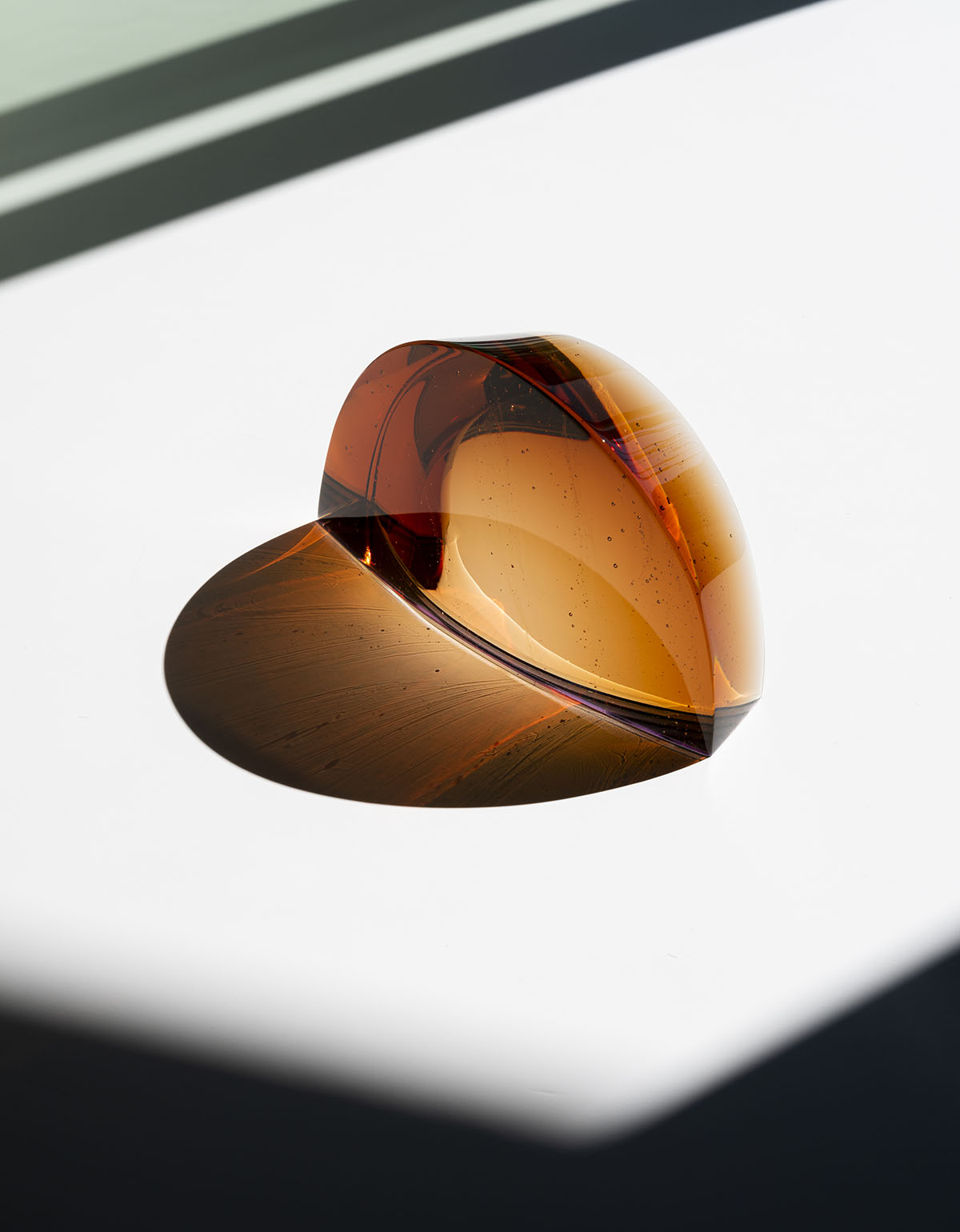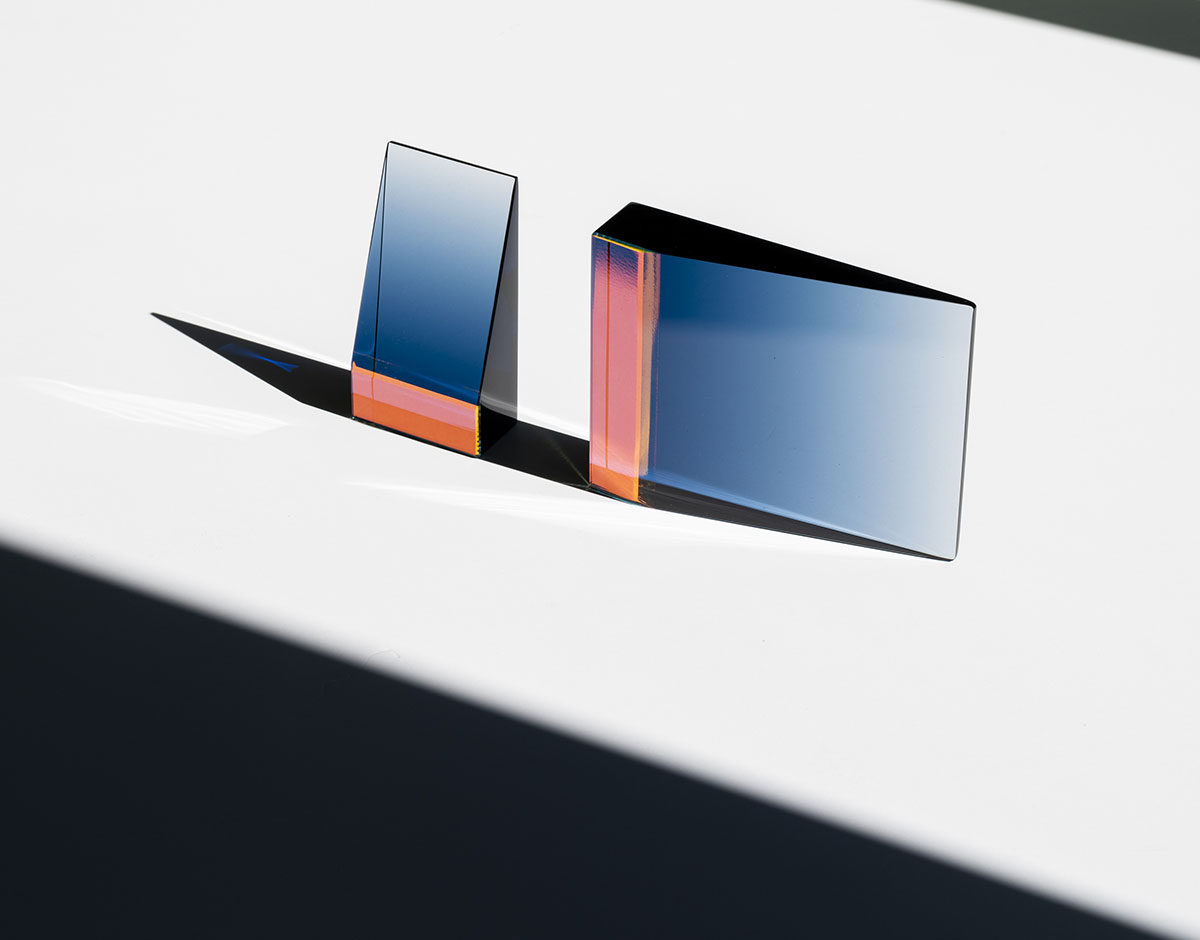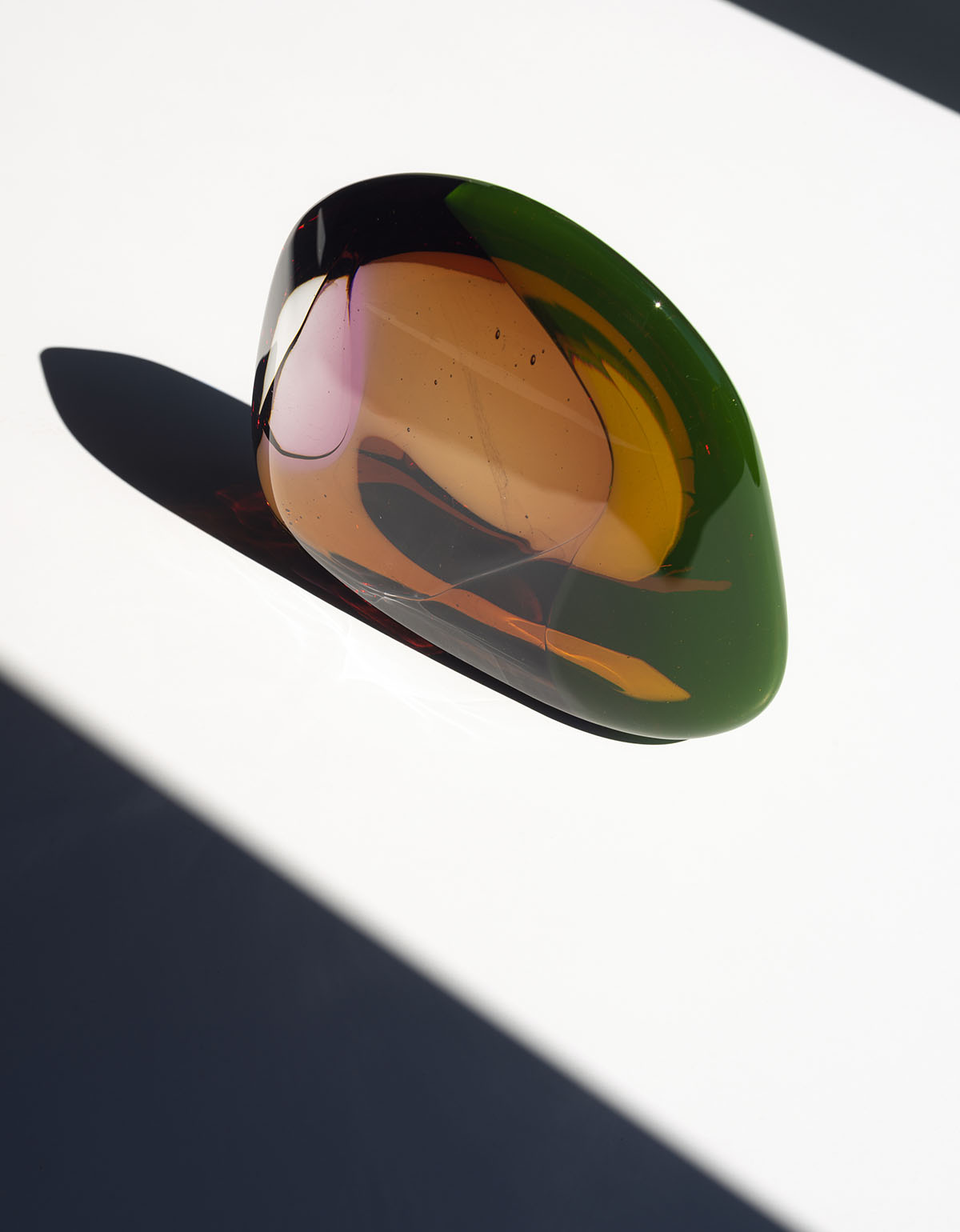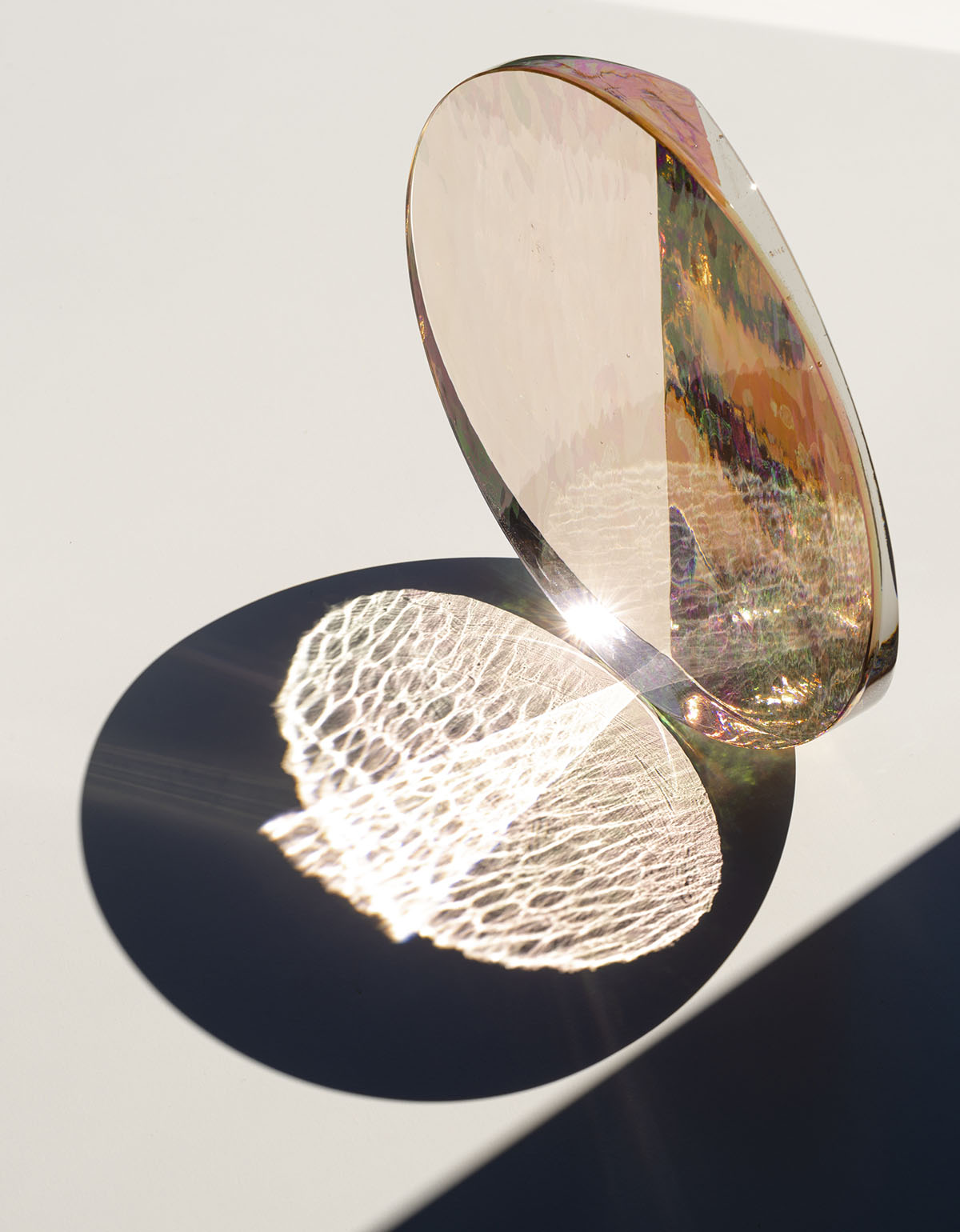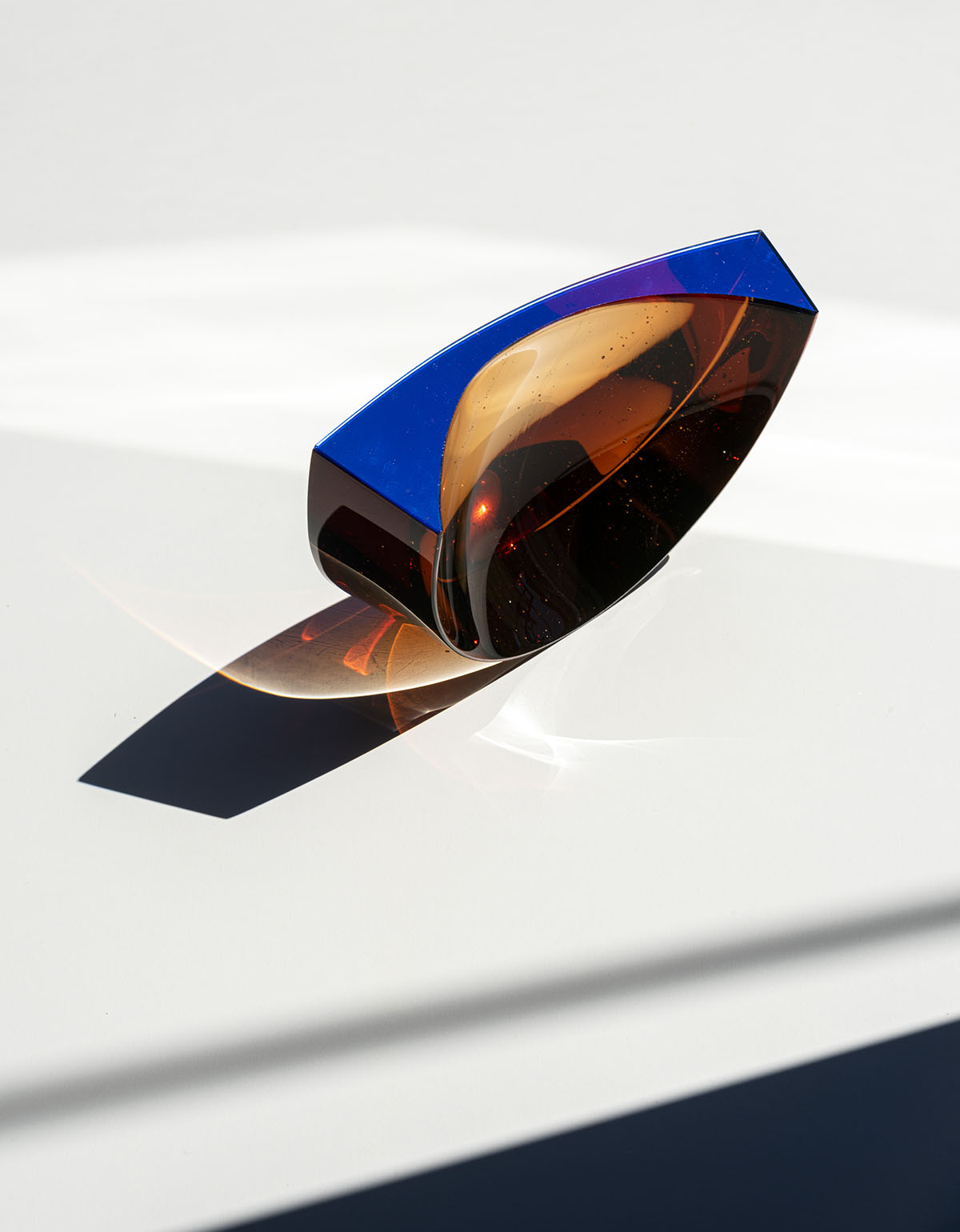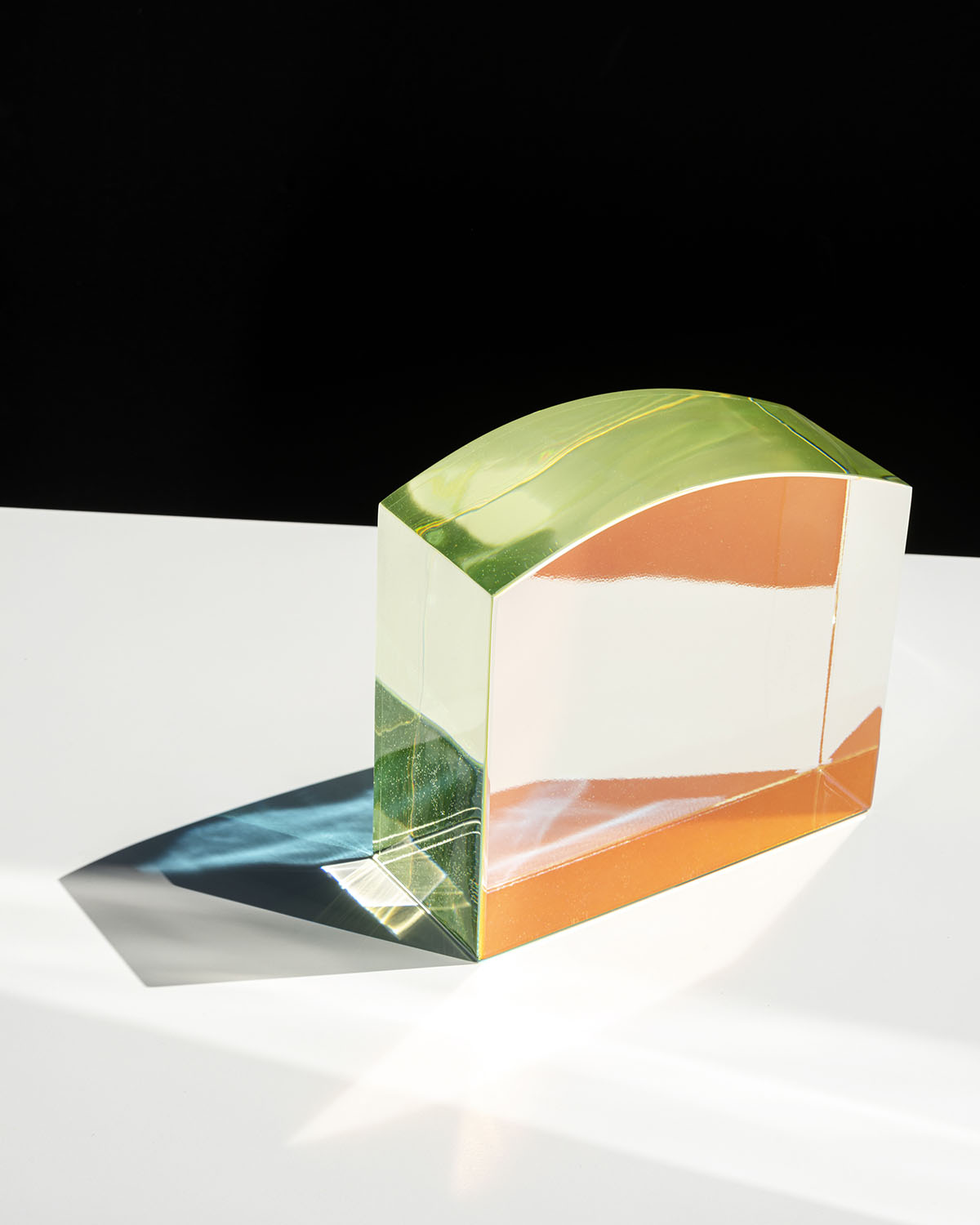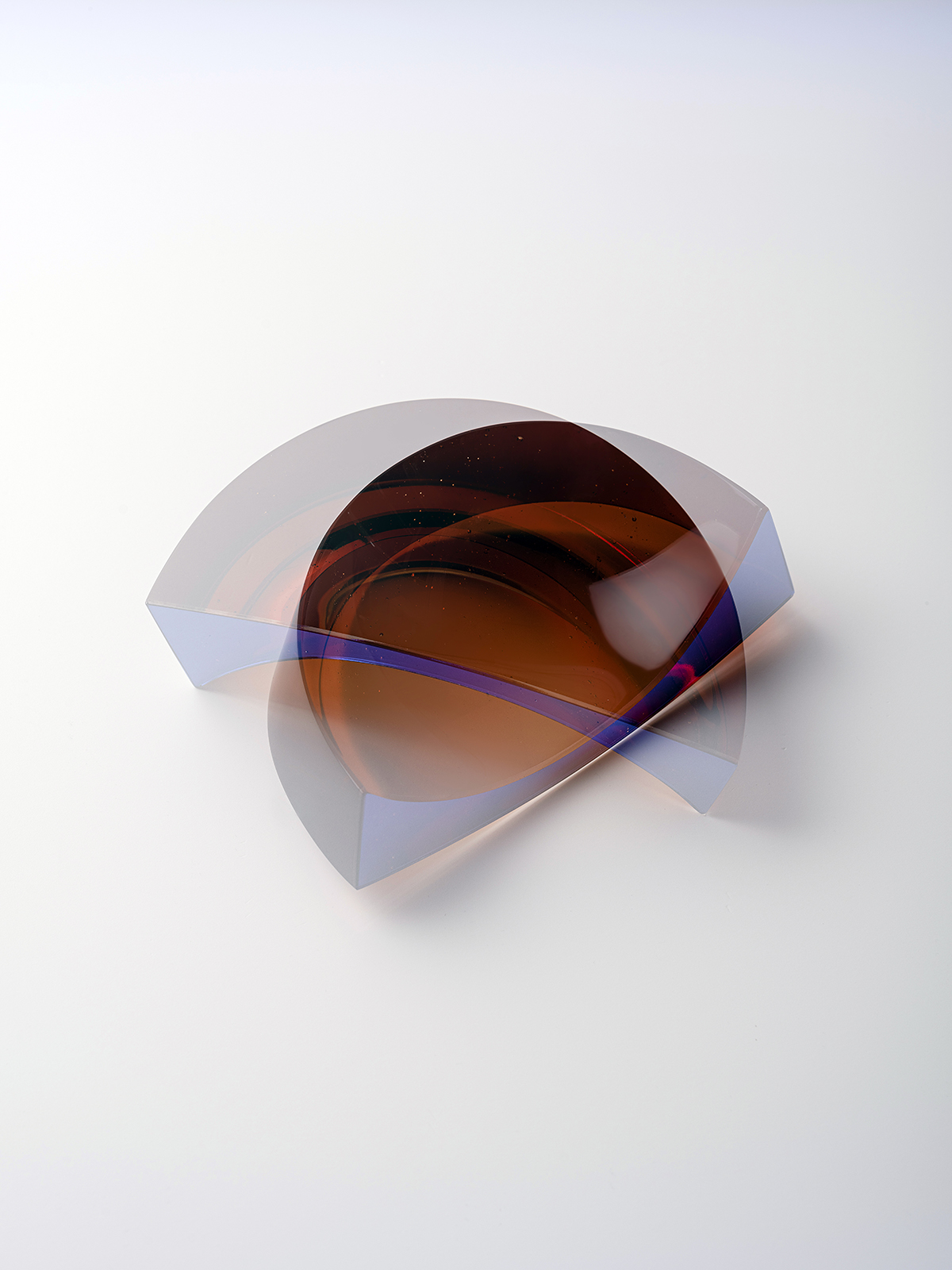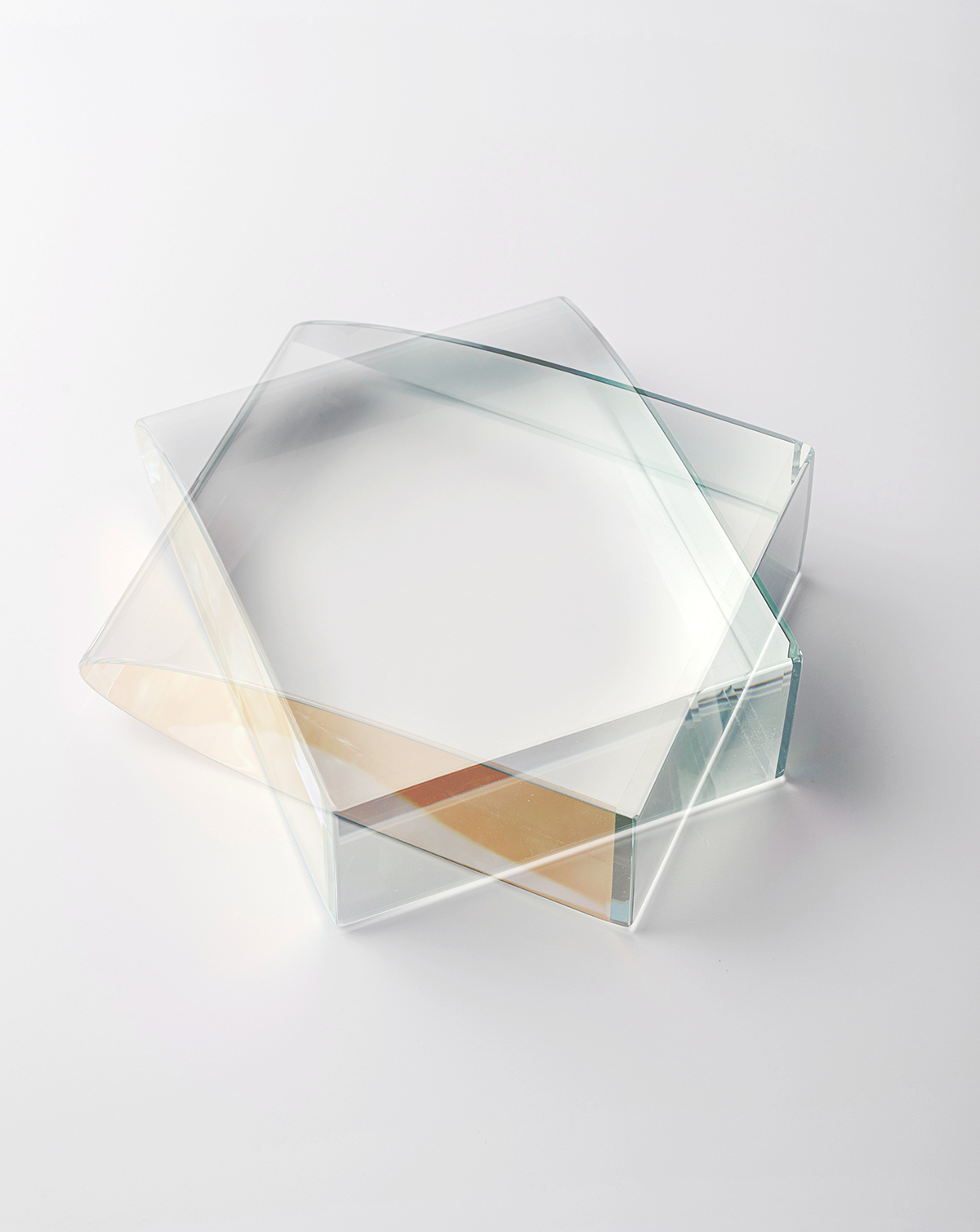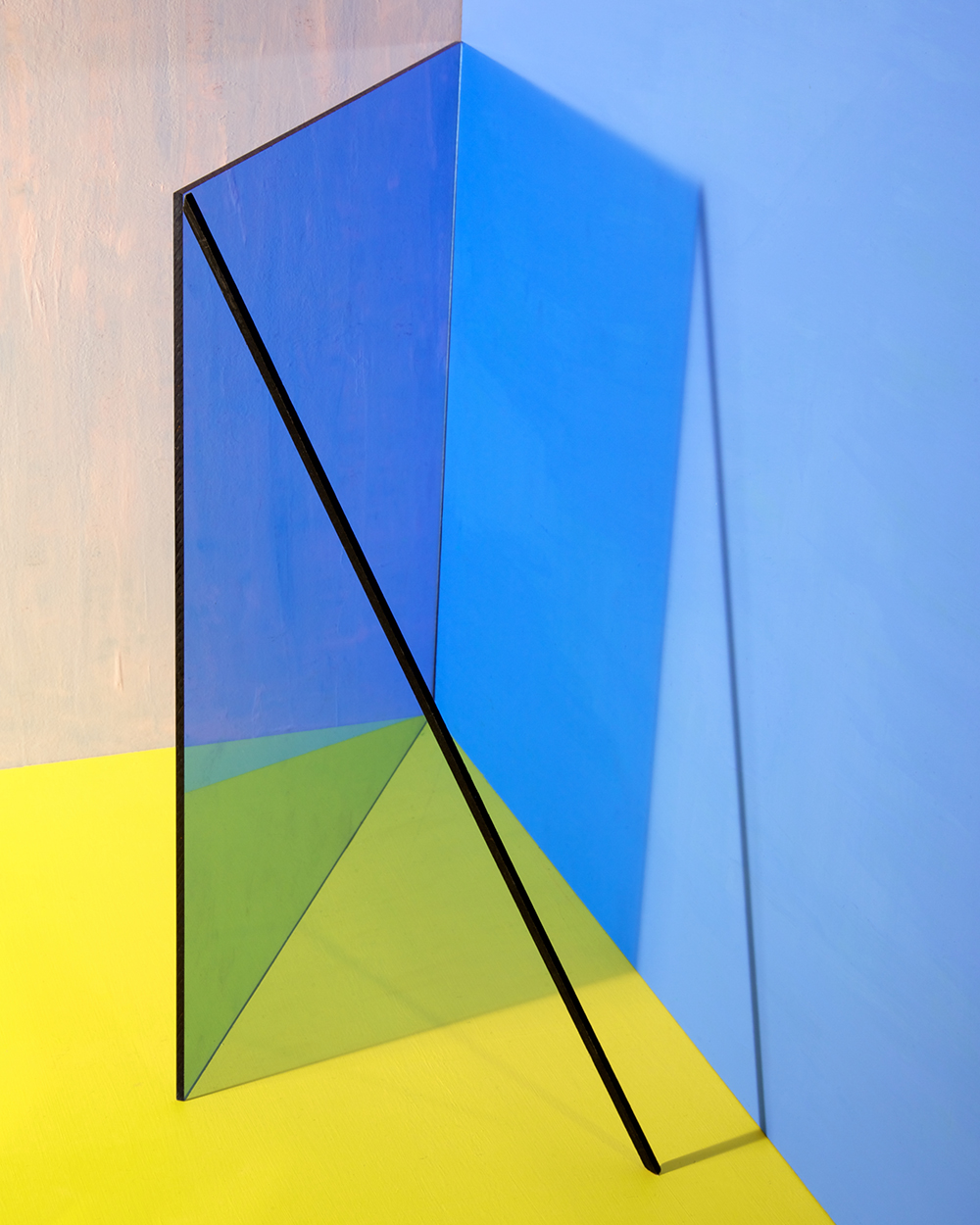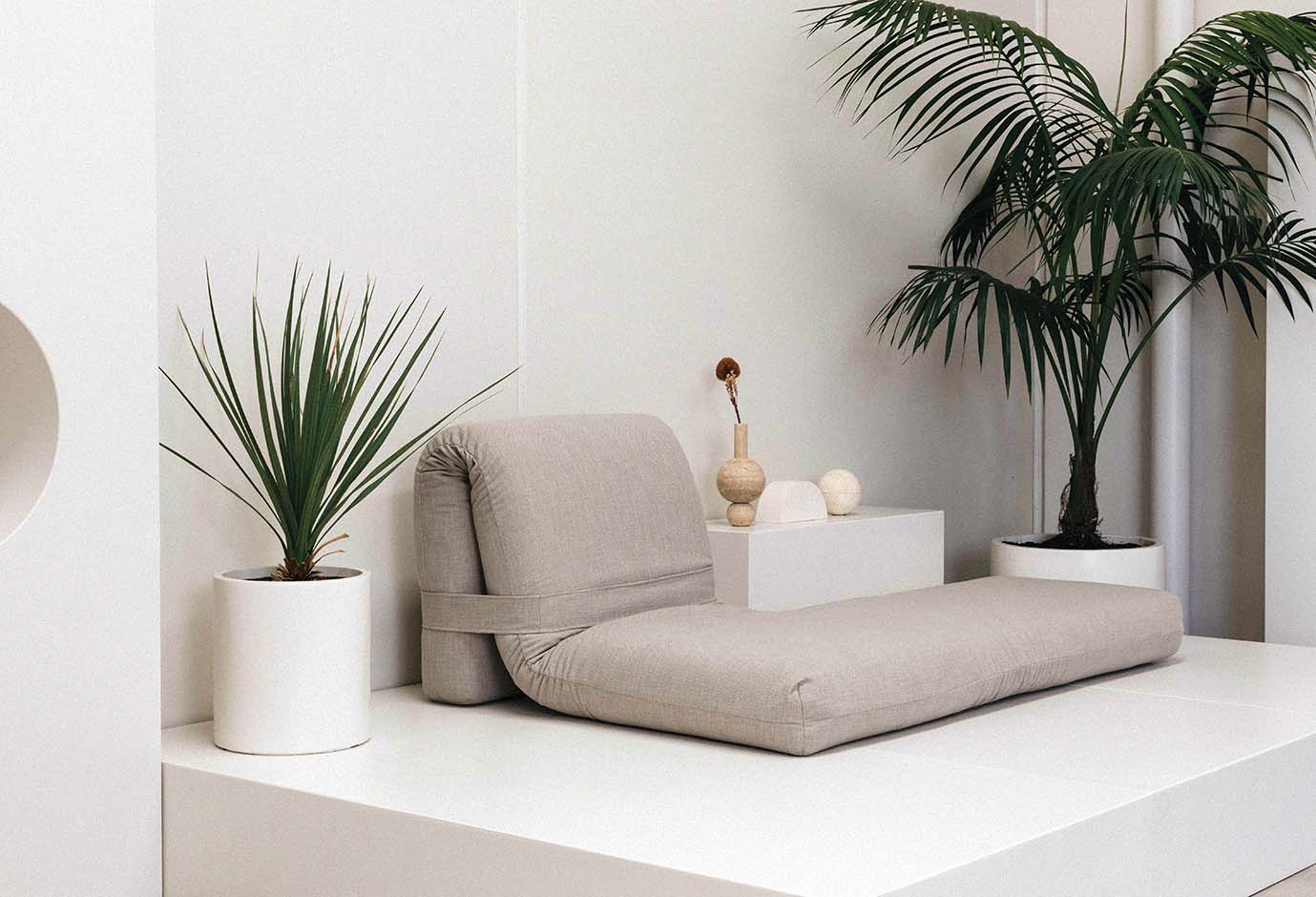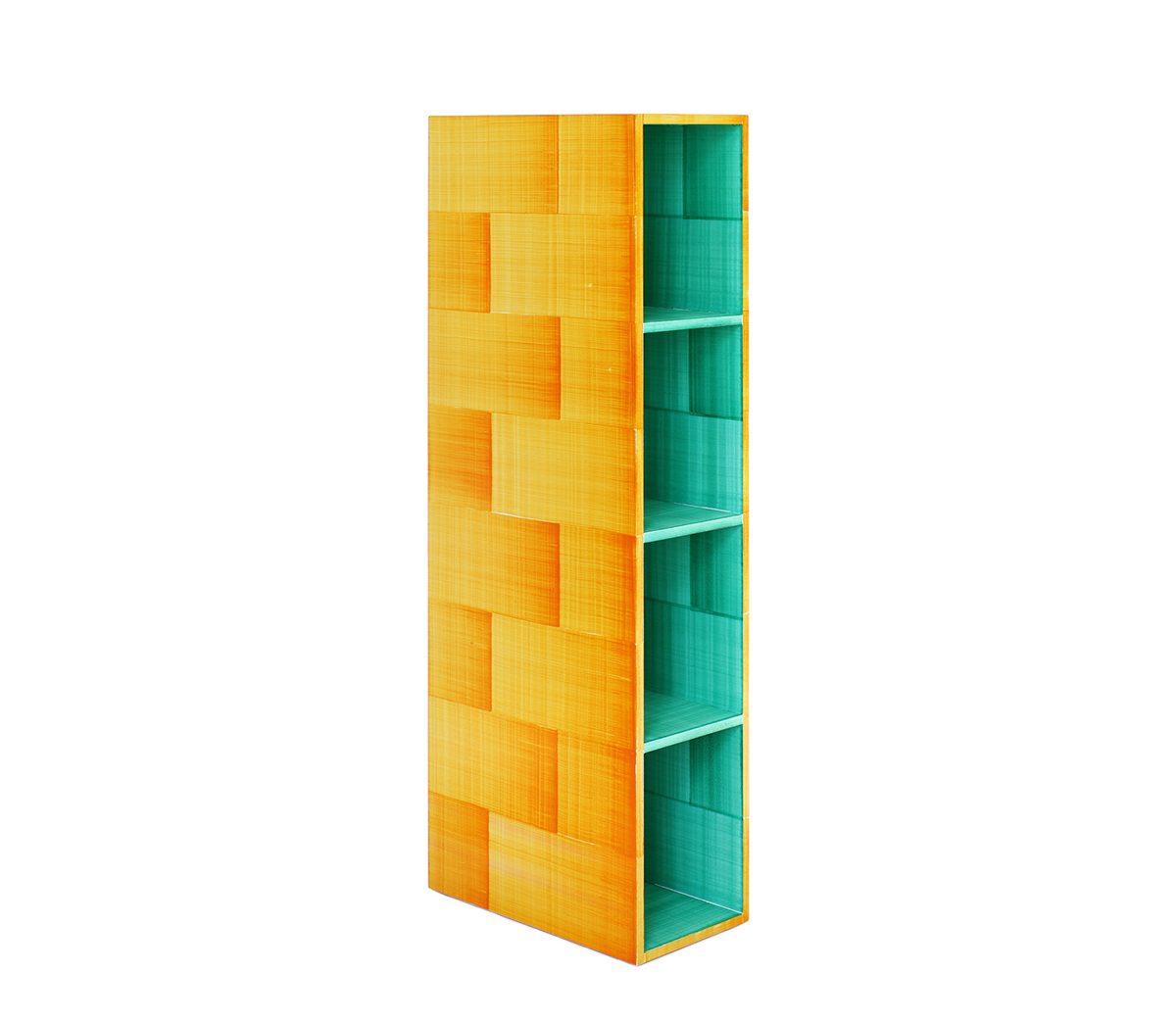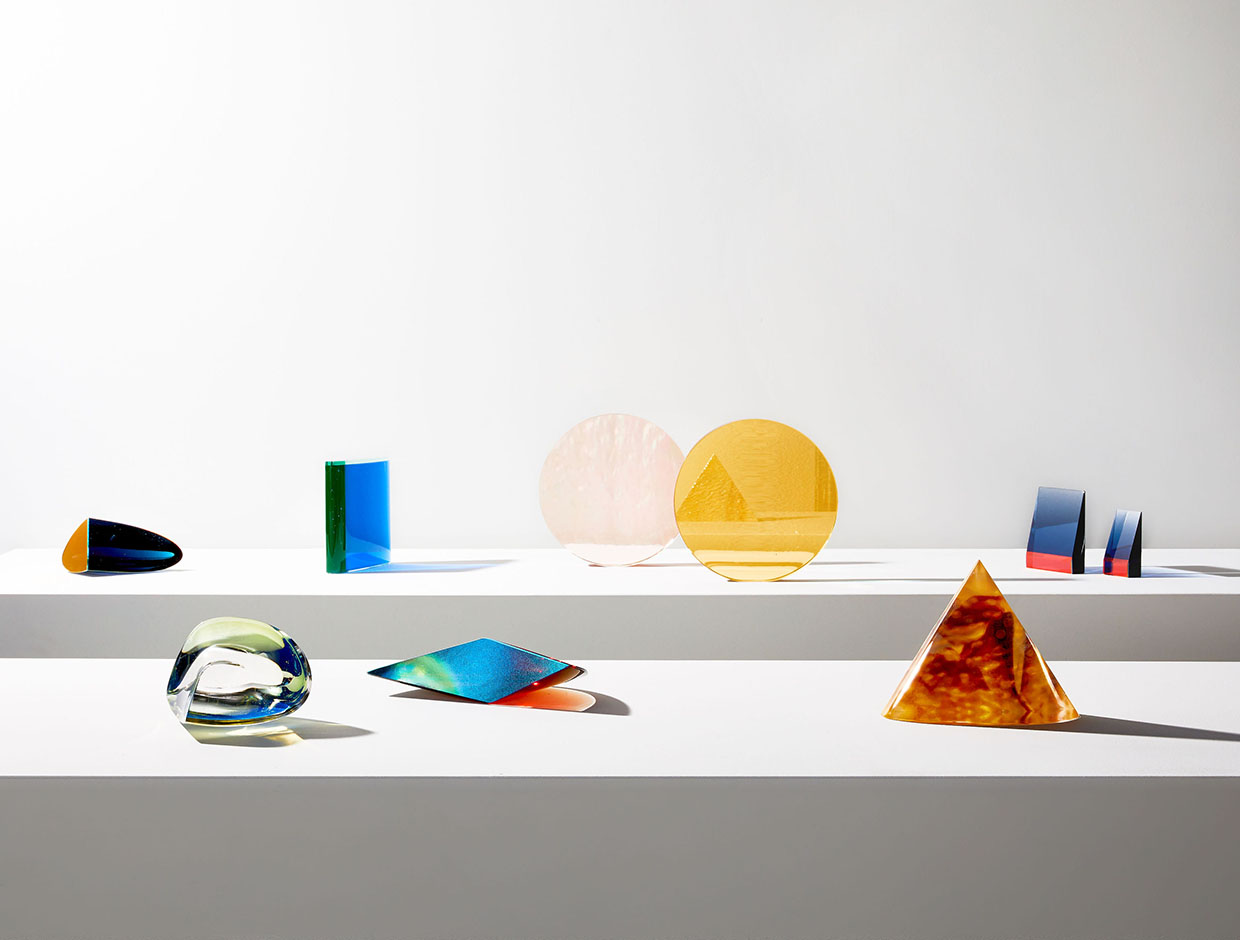
07.06.21
Excerpt: Exhibition
Glass Artist John Hogan is Beginning to See the (Ultraviolet) Light
Seattle-based glass artist John Hogan wants us to see the light. Not just metaphorically, but literally, specifically, and deliberately. As a glass artist, light has always been an integral part of Hogan’s work. The way light shines, absorbs, or reflects off of a glass surface can dramatically change the way a piece and even the space around it appears. With his new body of work, on view now at The Future Perfect in San Francisco, Hogan asks the audience to consider light in a new way — not just as an invisible, blanketing force, so ubiquitous as to be taken for granted, but an activating, crucial element of life itself, and one that deserves to be seen not just for its illuminating powers but for its intrinsic qualities. Titled “Ultraviolet,” many of the glass pieces rely on ultraviolet light — whether through natural sunlight or a UV-black light — to be fully activated. Aside from being discrete objects unto themselves, the glass pieces act as prisms that harness and make light visible.
While the California Light & Space artists concerned themselves with light as a diffuse, ambient force, Hogan hones in on the phenomenon as a force to be focused on, with his sculptures as conduits for that larger experience. Beginning with a sketchbook, Hogan then moves forward either with glass sessions that are purely experimental or using molds, casts and cuts that he has predetermined.
For “Ultraviolet,” the addition of trace amounts of uranium causes the glass to fluoresce in the presence of UV light. This is not the first time Hogan has utilized uranium, but it is the first time he’s choosing to focus on ultraviolet light in particular: “I’m fascinated with the duality of ultraviolet light. On some level, we need sunlight to create serotonin, which makes us happy. Then again, too much sunlight can cause cancer and other deleterious health effects.”
Other pieces in the show play with how one single object can reflect light in various ways. The spherical Bleach (2021), for example, appears crystal clear from one vantage point. Once circumambulated, a polyhedron of fluorescent magentas, yellows and greens suddenly materializes, due to a thin, subtle slice of color at the center of the work.
While light has always been an important part of his medium, Hogan is expanding his attention to both the visible and the invisible: “I’m very interested in the non-visible spectrum of light. There aren’t a lot of things on earth can verify the presence of UV light. Glass can do that. This is just the beginning of a more focused investigation.”
Studio photos by Amanda Ringstad
Installation photos by Daniel Villareal
